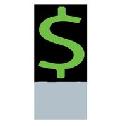
 |
|
| Financial Terms | |
| OECD |
|
Information about financial, finance, business, accounting, payroll, inventory, investment, money, inventory control, stock trading, financial advisor, tax advisor, credit.
Main Page: money, credit, investment, inventory control, payroll, stock trading, finance, financial, |
Definition of OECD
OECDOrganization for Economic Cooperation and Development, consisting of most of the world's developed economies.
Related Terms:economic components modelAbrams’ model for calculating DLOM based on the interaction of discounts from four Economic components. Economic assumptionsEconomic environment in which the firm expects to reside over the life of the Economic defeasanceSee: in-substance defeasance. Economic dependenceExists when the costs and/or revenues of one project depend on those of another. Economic earningsThe real flow of cash that a firm could pay out forever in the absence of any change in Economic exposureThe extent to which the value of the firm will change because of an exchange rate change. Economic incomeCash flow plus change in present value.  Economic order quantity (EOQ)The order quantity that minimizes total inventory costs. Economic rentsProfits in excess of the competitive level. Economic riskIn project financing, the risk that the project's output will not be salable at a price that will Economic surplusFor any entity, the difference between the market value of all its assets and the market Economic unionAn agreement between two or more countries that allows the free movement of capital, Economies of scaleThe decrease in the marginal cost of production as a plant's scale of operations increases. Economies of scopeScope economies exist whenever the same investment can support multiple profitable Import-substitution development strategyA Development strategy followed by many Latin American International Bank for Reconstruction and Development - IBRD or World BankInternational Bank for Reconstruction and Development makes loans at nearly conventional terms to countries for projects of high  Leading economic indicatorsEconomic series that tend to rise or fall in advance of the rest of the economy. Most distant futures contractWhen several futures contracts are considered, the contract settling last. OPEC (Organization of Petroleum Exporting Countries)A cartel of oil-producing countries. Plan for reorganizationA plan for reorganizing a firm during the Chapter 11 bankruptcy process. ReorganizationCreating a plan to restructure a debtor's business and restore its financial health. Society for Worldwide Interbank Financial Telecommunications (SWIFT)A dedicated computer network to support funds transfer messages internationally between over 900 member banks worldwide. World BankA multilateral Development finance agency created by the 1944 Bretton Woods, New World investiblewealth The part of world wealth that is traded and is therefore accessible to investors. Economic Value Added (EVA)Operating profit, adjusted to remove distortions caused by certain accounting rules, less a charge economic integrationthe creation of multi-country markets economic order quantity (EOQ)an estimate of the number  economic production run (EPR)an estimate of the number economically reworkedwhen the incremental revenue from the sale of reworked defective units is greater than economic value added (EVA)a measure of the extent to which income exceeds the dollar cost of capital; calculated network organizationa flexible Organization structure that organizational culturethe set of basic assumptions about organizational-level costa cost incurred to support the ongoing organizational structurethe manner in which authority and organization charta depiction of the functions, divisions, organizational forman entity’s legal nature (for example, World Trade Organization (WTO)the arbiter of global trade that was created in 1995 under the General Agreement on Tariffs and Trade; each signatory country has one Economic lifeThe period over which a company expects to be able to use an asset. economic order quantityOrder size that minimizes total inventory costs. economic value added (EVA)Term used by the consulting firm Stern Stewart for profit remaining after deduction of the cost reorganizationRestructuring of financial claims on failing firm to allow it to keep operating. Classical MacroeconomicsThe school of macroEconomic thought prior to the rise of Keynesianism. EconomicsThe study of the allocation and distribution of scare resources among competing wants. MacroeconomicsThe study of the determination of Economic aggregates such as total output and the price level. MicroeconomicsThe study of firm and individual decisions insofar as they affect the allocation and distribution of goods and services. Supply-Side EconomicsView that incentives to work, save, and invest play an important role in determining Economic activity by affecting the supply side of the economy. World BankThe International Bank for Reconstruction and Development, an international Organization that provides long-term loans to developing countries to improve their infrastructure. Purchased In-Process Research and DevelopmentUnfinished research and Development that is acquired from another firm. Research and Development IncentivesGovernment programs to promote research and Development. Related to : financial, finance, business, accounting, payroll, inventory, investment, money, inventory control, stock trading, financial advisor, tax advisor, credit. |